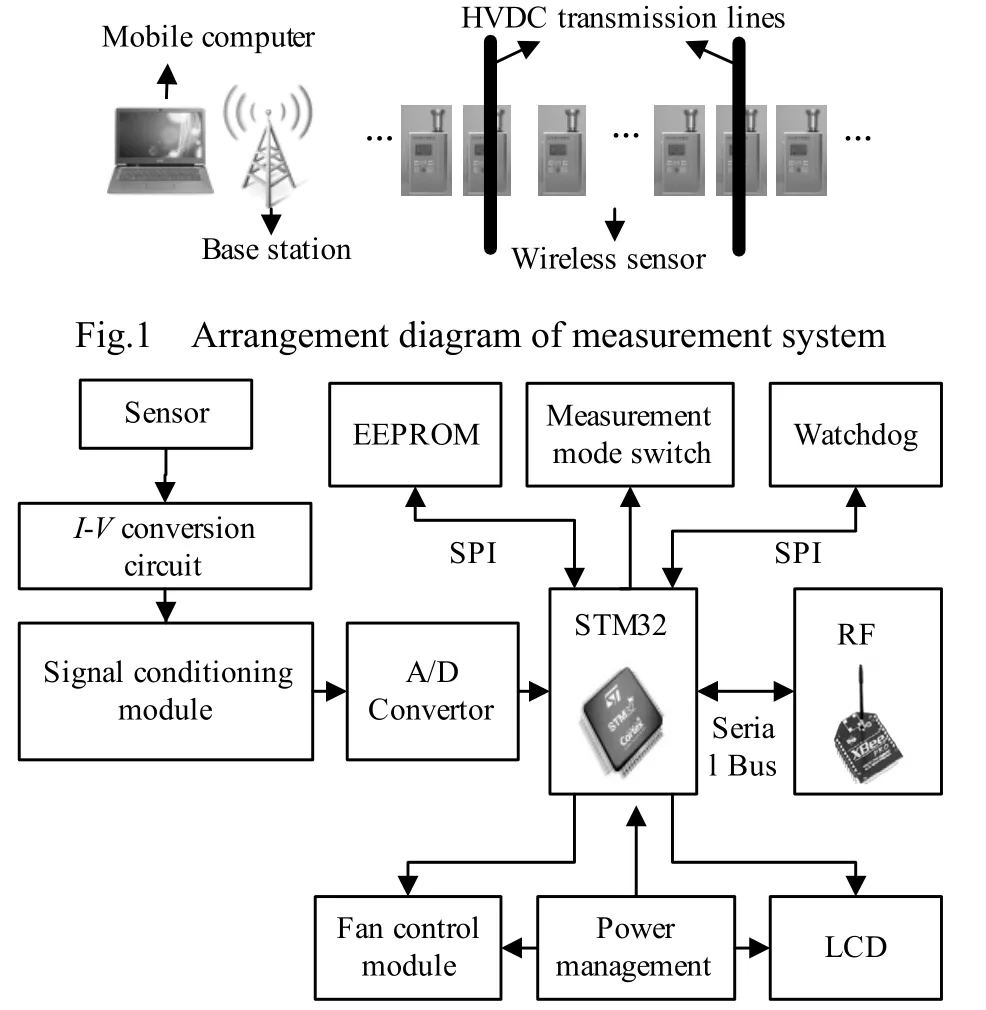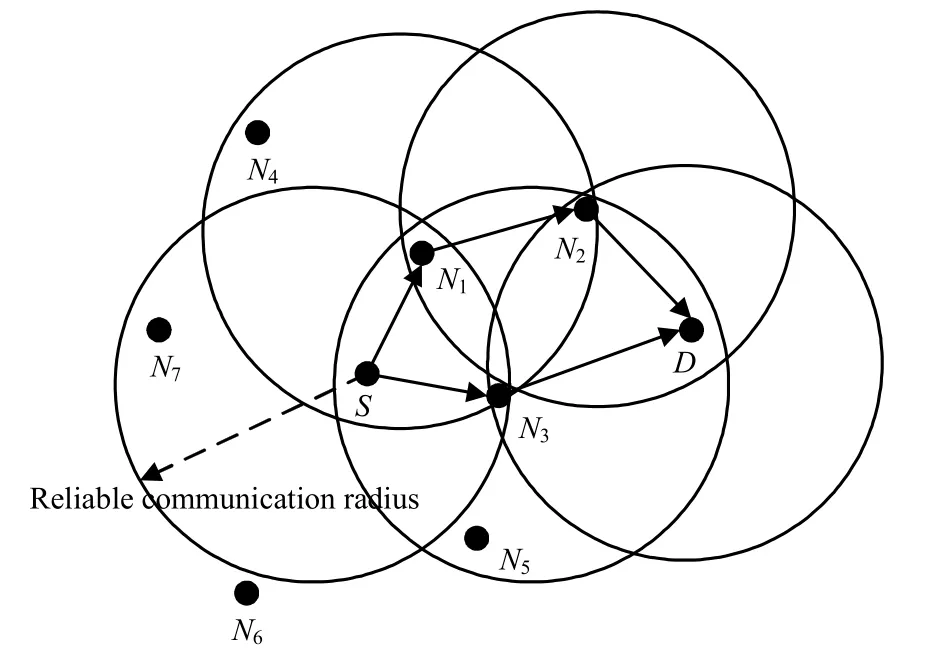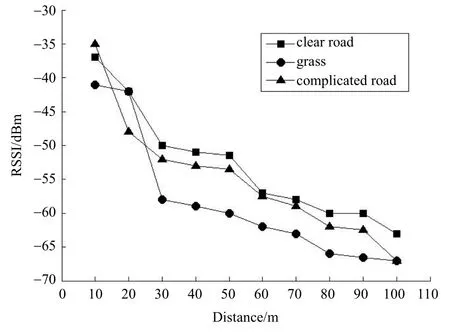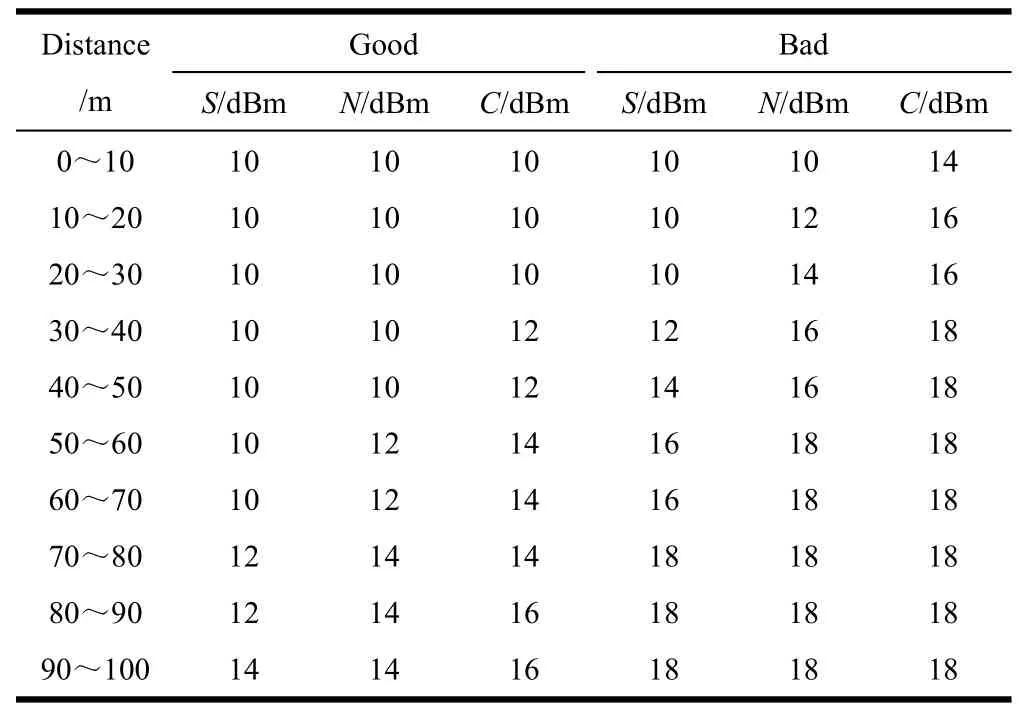Study on Low Power Consumption of Space Charge Density Measurement System under HVDC Transmission Lines
YUE Yong-zhe and ZHAO Zhan-min
(School of Information Science and Engineering, Hebei University of Science and Technology;College of Information Engineering, Hebei GEO University Shijiazhuang 050000)
With the rapid development of the national economy, the power demand in China is increasing continuously.HVDC transmission line is widely used for the strong-capacity, low-loss, and long-distance transmission[1].However, the electromagnetic effect of HV transmission line may have an impact on the surrounding environment and people’s daily life.In order to meet the requirements of environmental protection, we shall take measures to limit the environmental impact caused by it[2].
Space charge density is an important factor to evaluate the electromagnetic field of HVDC transmission lines.However, there are few studies on space charge by researchers at home and abroad.In China, through the calculation of the ground charge density under the DC transmission line, the change of charge density of the line structure parameters is obtained by Xiuli Lin.The measuring instruments about space charge density are also developed and measured by the Electric Power Industry Research Institute in Japan, and the High Voltage Transmission Research Center of Electric Power Research Institute and the Bonneville Electricity Bureau in the USA.These space charge measurement systems use traditional wired connection, while the new space charge measurement system uses the wireless communication technology to improve the equipment’s efficiency.The wireless communication technology has advantages of low cost, flexible networking, stable performance, and good scalability.
1 Space Charge Measurement System
The space charge measurement system’s working environment is around HVDC transmission lines.It usually requires many instruments linearly distributed under the transmission line to measure.And the measurement environment is generally in wilderness,with no power supply, which can only use dry batteries.Due to the limitations of battery performance, it’s not practical to replace battery frequently in time and economic aspect.Therefore, it’s necessary to maximize the equipment’s available time while using battery.Low power consumption of space charge measurement system is put forward to solve the power problem.
Space charge measurement system arrangement under HVDC transmission line is shown in Fig.1.The basic structure of the space charge measurement system is shown in Fig.2.

Fig.2 Block diagram of space charge measurement system
As the space charge collected by sensor is too small to collect easily, theI-Vconversion circuit is designed to achieve the conversion of current to voltage.The signal conditioning circuitry is composed of the charge amplifier, the band-pass filter, and the low-pass filter for the further processing.The sensor wireless node is the 2.4 GHz Xbee Pro radio frequency(RF)module.The STM32F103VE is selected as the microcontroller for the wireless sensor.The measurement mode switch unit is used to control the working mode of the wireless sensor.Using liquid crystal display (LCD)can facilitate viewing and recording data for operator.The value of the space charge density can be directly obtained by LCD.The power of the LCD, fan control module, and frequency module is controlled by the power management unit and can be turned off to the low power mode when the wireless node receives the instruction from the remote computer.
2 Distance and Environment Factors on Power Consumption
For analysis of wireless communication network’s power consumption, working environment, path loss,data length, communication distance, and some key parameters of wireless communication unit are essential.Good communication quality is the basis of research on low power consumption.
2.1 Path Loss Model
At present, commonly used signal propagation path loss models are free space propagation model,logarithmic distance path loss model, Hata model, and logarithmic - normal distribution model.But the most commonly used is the free space propagation model:

In the formula, PL(d)stands for radio signals’path loss in the distanced(km)between transmitter and receiver,f(MHz)stands for RF frequency,kis path attenuation factor, usually 2~5.Received signal strength indication (RSSI)is calculated by the formula (2):

wherePtis transmit power,Gtis transmit antenna gain,Gris receive antenna gain, andLcis line loss.
In practical applications, the complex surrounding environment factors make the actual data different from theoretical data.By simplifying the formulas (1)and (2), formulas (3)and (4)are deduced:

According to the formulas above, whenPt,Gt,Gr,Lc,fare constant, the value of RSSI and attenuation factorkis related to transmit distanced.
As the RSSI data communication quality index is mainly affected by the attenuation factor and propagation distance, it’s necessary to consider the communication distance problem caused by different working conditions of the equipment.
2.2 Influence of communication distance
A sensor network usually has a plurality of nodes.The distance between two nodes often exceeds the equipment’s reliable communication radius.So, to ensure the reliable connection communication quality,the purpose will be achieved through multi-hop.
1)2D plane distribution.Plane distribution means two-dimensional measurement environment.In Fig.3,if using the single hop mode to transmit data from source nodeSto target nodeD, communication distance will exceed the equipment’s effective communication radius, which can’t guarantee the reliability of communication connection.However, if using the multi-hop network, there are two proper routing paths for choosingS-N1-N2-DandS-N3-D.In these two multi-hop paths, each device is within the reliable communication radius.So the communication quality of the routing path, which is linked by the multi-hop routing path, will be improved greatly.Generally, theS-N3-Dpath is preferred for its less hops.If theS-N3-Dpath fails, it will try to enable theS-N1-N2-Dpath.

Fig.3 Two-dimensional plane distribution routing
2)One dimensional linear distribution.Studying on data transmission towards sub-nodes, which are far from the main node in one-dimensional linear distributed sensor network, is conducive to find the influence of the number of hops towards power consumption.For analysis of the hop problem,situations of single hop and multi-hops are compared.The single hop communication network includes a source nodeSand a target nodeDwith a distance ofdfromS, while multi-hop network hasn−1 transfer nodes betweenSandD.

Fig.4 Comparison of one dimensional single hop and multi-hop
In Fig.4,distands for each hop’s communication distance, and hopi is communication path in thei-th hop.For the Xbee-Pro module, the power consumption of received power and idle listening are the same, and are not affected by other factors.SetPRas the power consumption of node’s receiving data.For common Zigbee, the transmission power changes with an increase in the communication distance.Setas the power consumption of data transmission between two nodes which have a distance ofdifrom each other.UsePALLas the total power consumption of one time data transmission fromStoD.As Fig.4 shows, it only needs one time data transmission when using single hop method.

If using the multi-hop method, afterntime transmission, the total power consumption can be obtained:

From the two formulas above, the total receiving power consumption of data through multi-hop is proportional to the number of hops.However, the total transmission power consumption depends on equipment’s transmission power and distance.
Through study, it is found that Xbee-Pro’s transmission power consumption is related to its transmission power and has nothing to do with the communication distance.The receiving power consumptions under different transmission power settings are all in the same class.

If the transmission power of each node’s setting is the same, it can be obtained:

From formula (8), in the Xbee-Pro module, if the number of data transmission is more than once, the total power consumption of data receiving in network will be doubled.Therefore, it’s better to use single hop,if Xbee-Pro module’s communication quality is reliable.
2.3 Influence of Working Environment Factors
The working environment under HVDC transmission line is more complex than common,where many factors may affect on the communication performance of the equipment.So it should take the influence of work environment into consideration in the research of low-power energy management.
Under HVDC transmission lines, a proper communication distance can effectively ensure the quality of communication.However, when doing experiment in the field, surface environment and weather condition will affect the communication quality of equipment.Considering the topographic relief, surface vegetation, pedestrians, motor vehicle,and other factors in testing field, the equipment is put in simulation occasions for contrast experiment.The experimental sites are as follows:
1)Clear road.The road is clean, no pedestrians and motor vehicles, with lawn outside the road.
2)Grass.The place has undulating terrain, lush vegetation, with no pedestrian and vehicle passing through.
3)Complicated road.The terrain is flat.There are many tall trees several meters from test line, with few pedestrians and vehicles passing by.
After finishing the three experiment sites above,RSSI data summary within 100 m is shown in Fig.5.According to Fig.5 data, the communication quality on the clear road is the best, and the communication quality on the lawn is the worst.Because of the undulating terrain and vegetation’s absorption and scattering towards signal, the RSSI signal is weak.The communication quality of the complicated road communication quality fluctuates the most, for many uncertain reasons, such as pedestrian, motor vehicle,obstacle, and so on.

Fig.5 RSSI value in different environment
2.4 Reliability Analysis of Communication
Generally speaking, the main indicators for judging wireless communication network performance are packet reception ratio (PRR), RSSI, and link quality indicator (LQI).PRR is the most intuitive communication quality indicators.RSSI can be used to determine the quality of communication.LQI represents energy and quality of receiving data.PRR data needs large amount of experiments to gather.In practical applications, it’s barely used, for its time cost and energy consuming.RSSI and LQI are relatively easy to obtain, and they can be converted to each other as follows:

Because the Xbee-Pro module itself can get the RSSI value of the target node through a simple instruction, the RSSI data can be more convenient to be used as the evaluation standard of the link quality.
In different working conditions, the Xbee-Pro module has different performances.Due to a large number of environmental factors that constitute the working environment, quantitative and qualitative description is too complex.Therefore, it is easier to use other indicators to analyze.RSSI can represent communication quality in some extent, but PRR can more clearly show the effect of communication.Therefore, through the comparison between RSSI and PRR data under different working conditions,communication distance and transmit power, which are used to verify whether RSSI can be used as a general indicator for judging the quality of communication, are very important.
3 Low Power Consumption Control
3.1 Division of Working Environment Conditions
According to previous researches, the configuration of wireless communication unit is determined by environment factors and communication distance.The space charge measurement equipment is usually distributed on both sides of HVDC lines, and the distance between farthest nodes is less than 100 m.Therefore, we only consider the communication distance within 100 m.However, due to the influence of environmental factors, communication distance is not the only factor that influences the transmit power.
In this paper, the weather conditions are divided into good and bad, the surface environment is divided into simple(Srepresentative), normal(Nrepresentative),and complex(Crepresentative).
Good weather means sunny and little wind; bad weather refers to gloomy weather and big wind.simple surface environment means clear road, with no obstacle, pedestrians and vehicles; normal surface environment refers to relatively clear road, with few obstacle, pedestrians, and motor vehicles; complex surface environment represents the road is uneven,with many obstacles, pedestrian, and vehicles.
3.2 All Terminal Nodes Allocation Strategy
3.2.1 Transmit Power Allocation Strategy
Allocate transmit power according to environment condition, set each 10 m a unit.Table 1 shows transmit power allocation in different environment.The foundation of transmit power allocation strategy is the configuration when wireless communication unit’s sub nodes are all single-hop model, and all nodes are used as terminals.In this condition, power consumption of every node is used to maintain its normal work, there are barely communication between nodes that consume additional energy.This scheme can reduce the total power consumption of the network.
According to the previous studies, total network’s power consumption will increase in proportion to the number of hops.So it’s better to set sub-node in single-hop communication, and make all sub-nodes as terminal nodes.In this condition, all sub-nodes directly communicate with master node point to point.

Table 1 Transmit power in different environment
3.2.2 Node Type Allocation Strategy
Xbee-Pro module generally prefers less hops path which is more reliable for data transmission.Because the system is linear distribution beneath the line,routing nodes should act as a connecting link between master node and sub nodes.Therefore, when choosing the routing nodes, it should take node’s location and residual energy information into consideration.The distribution of space charge system is within 100 meters, so routings’ configuration is based on different environment conditions.
1)Good weather condition
The communication quality between master node and sub nodes is generally good, which leads to reliable connection.Therefore, it can choose the sub node which has the most residual energy between 1/3 and 2/3 of network length to use as routing, in order to improve system’s robustness.In Fig.6,Ais master node,BtoIare all sub nodes.There are three sub nodes betweend/3~2d/3which areD,EandF.NodeEis chosen as routing for its most residual energy.
2)Bad weather condition
Unreliable communication connection happens mainly at node which far from master node.It’s necessary to choose node in the middle of network to act as routing for increasing the robustness of wireless network.The nodes between length of 1/4 to 1/2 and 1/2 to 3/4 are sorted by residual energy.As shown in Fig.7, NodeEand NodeGare chosen as routing.

Fig.6 Allocation of node type in good weather

Fig.7 Allocation of node type in bad weather
When the number of nodes in the wireless communication network is more, the distribution length can be more sub divided, in order to increase the number of routes and enhance the network robustness.
3.2.3 Rrouting Hop Allocation Strategy
In ideal condition, when all nodes are set as terminal, master node and sub nodes can establish reliable connection, while all hops are set as one.Considering the influence of equipment’s function in practical use, so set up routing node to increase the network reliability.As shown in Fig.8, nodes can communicate through at most 5 routings, namely the biggest hop number (NH(max))is 6.Due to the node will give priority to the least hop number path of communication, all nodes’ hop number configuration should set larger than 6.

Fig.8 Node hop allocation
During bad weather, the communication quality of the distant nodes is easily affected.This routing node’s function is no longer only enhancing the network’s robustness, but also carrying on large amount of data transmission task.So all terminal nodes configuration will not only result in energy waste, but also may lead to routing node data congestion.
3.3 Mixture Node Type Allocation Strategy
The purposes of the mixture node type allocation strategy are realizing reasonable allocation of routings and terminal nodes, balancing the total power consumption of the network, and improving the overall life time of the network when sub nodes can’t establish direct communication with master node[3].The stability of the wireless communication network needs different work type nodes to cooperate with each other[4].
The selection routing node type is based on the communication distance and node’s residual energy.The nodes with more residual energy in wireless communication network can take on more communication tasks, achieving the purpose of extending the overall network life time.
As shown in Fig.9, d stands for the distribution length of one-dimensional network, A is the master node, andBtoIare sub nodes.The residual energy of each node is within the bracket.
In Fig.9a, sub-nodes in network are divided into three parts.In each part, by selecting the remaining capacity of the highest node as routing node, sub-nodes make the routing node evenly distributed in the whole network.In Fig.9b, sub-nodes in network are divided into four parts.In Fig.9c, all nodes other than the farthest two nodes are separated into two nodes a group.The larger residual energy one is set as routing node.The routing nodes in this method are too many.It’s easy to select low residual power node for routing,which affects the overall network life time.In Fig.9d,The remaining energy of all the sub-nodes are sorted,and set n nodes of the most residual energy as routing nodes.Although this method can avoid the nodes with less residual energy to be set as routing node, but the network communication quality still can’t be guaranteed.The length distribution of space charge system is limited, so the strategy in Fig.9a, Fig.9b is more suitable.
When the weather is good, 14 dbm transmission power can accomplish space charge measurement system’s 100 m range communication requirement.Therefore, in good weather conditions, the mixture node type allocation scheme has no advantage and will increase the power consumption of the whole network.In bad weather conditions, the maximum transmission power can’t guarantee reliable communication within 100 m.In this case, the advantages of mixture type node allocation strategy are very obvious.
According to Table 1, even in the worst working environment, Xbee-Pro module can accomplish 40 m’s reliable communication.So we can divide the distance from master node into several segments.Each segment chooses the largest residual energy nodes as routing.
3.4 Network’s Energy Management
Overall network lifetime is the working time of network node which is the first to stop operation[5-7].Through the energy management, the network configuration strategy will periodically and dynamically adjust, leading to great extension of overall network lifetime[8-10].

Fig.10 Overall network lifetime estimation
In Fig.10, in normal status, working cycle is set to 5 s, while all nodes can be served as routings.NodeChas residual energy of 50%, which is the lowest of all nodes, assuming that in each working cycle the time of communications isk=3 and the transmit power is 18 dBm.The lifetime of the entire network is roughly equivalent to the lifetime of NodeC, which is expressed in formula (10):

In energy management status, set node’s low power consumption configuration and regular dynamic adjustment strategy according to different situations.For example, the nodeCisk=1, the transmission power is 10 dBm, the working cycle is 5 s, and the duty cycle is 1/5.The overall network lifetime is calculated by formula (11):

In contrast with the normal status, the network lifetime prolongs 39% after energy management.
4 Conclusions
In this paper, a space charge density measurement system based on wireless networks is mentioned.Through the research on low power consumption about wireless communication unit’s communication distance and working environment, it gets the reasonable range of RSSI in reliable communication and puts up with the configuration strategy of routing hops and node type.On the basis, the energy management strategies of all terminal nodes type and mixture nodes type are proposed, in order to adapt to different working conditions.The analysis of network lifetime proves that it improves the efficiency of electromagnetic monitoring, which promotes the technology progress of HVDC transmission.
[1]ROUBAL Z, STEINBAUER M, SZABÓ Z, et al.Real-time measurement of air ion spectrum using gerdien tube with segmented inner electrode[C]//PIERS Proceedings.Moscow,Russia: [s.n.], 2009: 1744-1748.
[2]SRIE V J E, GANESHKUMAR P, VASANTHA S G.A survey on algorithms for cluster head selection in WSN[J].International Journal of Advanced Research in Computer Engineering & Technology, 2013, 2(5): 2278-1323.
[3]ABHISHEK C, SUMEDHA S.Minimization of average energy consumption to prolong lifetime of wireless sensor network[C]//IEEE Global Conference on Wireless Computing and Networking.Lonavala, India: IEEE, 2014.
[4]KUMAR V, JAIN S, TIWARI S.Energy efficient clustering algorithms in wireless sensor networks: a survey[J].International Journal of Computer Science Issues, 2011, 8(5):259-268.
[5]BRUNO B, FRANCKY C, DENIS C.Energy efficiency of the IEEE 802.15.4 standard in dense wireless microsensor networks: Modeling and improvement perspectives[J].Springer Netherlands, 2008, 1(S02): 196-201.
[6]WANG Qin, YANG W W.Energy consumption model for power management in wireless sensor networks[C]//4th Annual IEEE Communications Society, Conference on Sensor, Mesh and Ad Hoc Communications and Networks,2007 (SECON’07).San Diego, USA: IEEE, 2007: 142-151.
[7]CIGDEM E, MERVE S V, CAGRI G.Lifetime analysis of wireless sensor nodes in different smart grid environments[J].Wireless Networks, 2014(20): 2053-2062.
[8]LJILJANA S, STEVAN M B, KEVIN W S.Partner choice and power allocation for energy efficient cooperation in wireless sensor networks[J].ICC, 2008, 14(3): 4255-4260.
[9]SALLABI F M, GAOUDA A M, EI-HAG A H.Evaluation of Zigbee wireless sensor networks under high power disturbances[J].IEEE Transactions on Power Delivery, 2014,29(1): 13-20.
[10]WANG Chu-fu, SHIH J, PAN Bo-han.A network lifetime enhancement method for sink relocation and its analysis in wireless sensor networks[J].IEEE Sensors Journal, 2014,14(6): 1932-1942.

